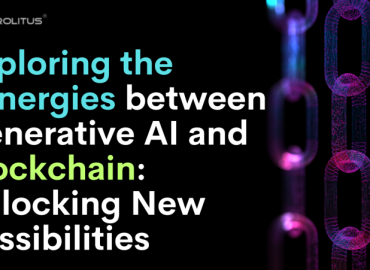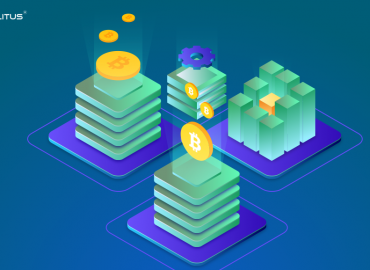Solana is an open-source blockchain that takes advantage of emerging technologies to deliver a marketplace and decentralized applications that are quick, scalable, and technologically advanced (dapps). Proof-of-history is the consensus algorithm that is used to execute the protocol. It was developed by Anatoly Yakovenko, who was also the founder of Solana.
Many observers believe that Solana provides consumers and developers working in the sector with features that are more inventive and efficient, although it is not yet widely known within the crypto and DeFi communities. Solana, which has a market valuation of US$35 billion, has the goal of becoming a network that never experiences delays by incorporating cutting-edge and cutting-edge technology into its operations.
What is SOLANA?
In a nutshell, Solana is a distributed ledger that is publicly accessible and open-source. SOL is the platform’s native cryptocurrency, and it was designed from the ground up to host a diverse range of scalable decentralized applications (dApps). Solana, just like the rest of the most prominent blockchains in the world, enables users to create and execute smart contracts. This is of the utmost significance since smart contracts are used to mint new NFTs and exchange existing ones. These contracts show who owns what and let users access digital assets in NFTs and do a number of other things.
Anatoly Yakovenko created the Solana blockchain in 2017 to solve the scalability problems that other blockchains, like Ethereum and Bitcoin, have because of their high transaction costs and slow transaction rates.
At the time, blockchains were only capable of processing approximately 15 transactions per second (TPS). On the other hand, major credit cards can process approximately 65,000 transactions per second. In addition, users are required to pay transaction fees for every attempt they make to conduct business on a blockchain. These costs have the potential to become prohibitively expensive and rocket into the hundreds of dollars when blockchain networks get crowded, as can happen during the launch of a popular NFT. Both of these problems were addressed by the development of Solana, which was successful.
Solana’s TPS is competitive with those of Visa and Mastercard, which positions it as a frontrunner in the market in terms of speed and the capacity to scale on a worldwide scale. In In In addition to that, the cost of a Solana is astonishingly inexpensive. Solana’s transaction fees are only a fraction of a penny each, in contrast to Ethereum’s high fees, which make using Ethereum difficult for people who do not have a high-risk threshold to participate in NFT trading. Ethereum’s high fees make it difficult to use for people who do not have a high-risk threshold. Because of this, Solana has gained an incredible following and is currently one of the cryptocurrency ecosystems with the most rapid expansion.
Solana Technologies (PoH)
Solana uses PoH as the consensus mechanism. It is a series of computations that, when combined, produce a digital record that can be used to demonstrate that a particular event took place on the network at a particular point in time.
Imagine it as a cryptographic clock that not only appends the data structure but also provides a timestamp to each transaction that takes place on the network. This data structure may consist of an appendix of data.
Proof of Stake, which employs the Tower BFT algorithm for consensus, serves as an extra verification mechanism for transactions and is the foundation upon which PoH is built. At its very heart, PoH is essentially a high-frequency Verifiable Delay Function (VDF).
A VDF is a triple function that produces an output that is both unique and reliable. These functions include setup, evaluation, and verification. It makes sure that the network stays in order by showing that the people who make blocks have waited long enough before letting the network move on.
In the instance of Solana, it makes use of SHA256, also known as the Secure Hash Algorithm 256-bit, which is a patented collection of cryptographic operations that generate a result that is 256 bits in length (which is also the one Bitcoin uses). The Solana network, which takes periodic samples of the count and hashes of the SHA256 algorithm, makes data in real time that is based on the set of hashes on CPUs.
Validators can make use of this sequence of hashes to record a particular piece of data that was generated before the generation of a given hash index. Once this piece of information has been added, a timestamp will be made for each transaction.
Solana asserts that it can achieve a throughput of 65,000 TPS with an average block time of 400 milliseconds and an average transaction cost of 0.000005 SOL (the native token of the Solana network). Instead of waiting for other nodes to verify transactions, all validators on the network use a cryptographic clock to keep track of events so they can get the numbers they need to reach their goals.
Key features of Solana Blockchain
Proof of history (PoH)
Proof of History (PoH) is a term used in the cryptocurrency community to describe a blockchain that can track and verify past transactions. PoH blockchains can do this by incorporating Merkle trees into their design. A Merkle tree is a data structure that allows for the verification of individual transactions without having to download the entire blockchain. Because of this, Proof-of-Hand (PoH) blockchains are the best way to verify past transactions and track the movement of assets.
Tower byzantine fault tolerance (BFT)
In computing, Tower Byzantine Fault Tolerance (BFT) is an algorithm that allows a group of nodes to reach a consensus even if some of them are unreliable or malicious. BFT systems can be used to build high-availability and fault-tolerant applications.
The Solana blockchain network uses the Tower BFT algorithm to achieve consensus between its nodes. The Tower BFT algorithm makes sure that the network can still work even if a node fails or stops being reliable.
Turbine
The Turbine is a protocol for blockchains that uses delegated proof of stake (DPoS) for consensus. Delegated proof of stake is a type of algorithm used by some blockchain networks to achieve distributed consensus. In DPoS, the network is divided into groups, or pools, of delegates. These delegates are elected by the users of the network and are responsible for validating transactions and maintaining the blockchain. Transactions on DPoS networks are confirmed by a certain number of delegates, called quorums. This ensures that transactions are confirmed quickly and that the network remains decentralized.
The turbine was designed specifically for blockchains that use delegated proof of stake for consensus. It allows these blockchains to process transactions more quickly and efficiently than other blockchains.
Gulf
The Gulf Stream is a protocol that enables faster leader-switching and transactions on the Solana blockchain. The protocol pools together all of the pending transactions in the network, allowing them to be processed more efficiently. This results in a speedier and more reliable blockchain platform.
Sealevel
Since its creation in 2013, blockchain technology has been used to power Bitcoin, the world’s first and most well-known cryptocurrency. Sealevel is a Solana blockchain network that uses smart contracts to enable trustless transactions and secure data sharing. Sealevel is made to be used by a lot of people and has the potential to change the way businesses work.
Pipeline:
The pipeline is a new blockchain network that is being developed by Solana. The network consists of a large number of nodes that work together to process input data. Pipeline also uses a hardware component to help process data more quickly.
Cloudbreak
Cloudbreak is a horizontal scaling strategy for databases and other applications that require high scalability. The Cloudbreak system allows you to add new hardware and software resources to your system to increase its capacity and performance. This makes Cloudbreak an ideal solution for companies that are experiencing rapid growth or need to handle large amounts of data. Cloudbreak is also a great way to improve the performance of existing systems without having to purchase new hardware.
Archivers
Archivers are a key feature of the Solana blockchain network. They are in charge of sending data from the validators to the store, and they are a very important part of keeping the blockchain safe and open.
The archiver nodes are a part of the network of nodes that make up Solana. They are responsible for transferring data from the validators to the store, and they play a crucial role in maintaining the security and transparency of the blockchain. When a new block is created, it is first sent to all of the archiver nodes for verification.
Blockchain and NFTs
Non-Fungible Tokens (NFTs) are digital assets that are unique and cannot be divided into identical copies. NFTs have become more popular in recent years.
The Solana blockchain is a high-performance blockchain that can process up to 7,000 transactions per second. This makes it one of the fastest blockchains available today.
The platform also has a very efficient Proof of History algorithm that allows for fast verification of transactions. This makes it an ideal platform for developing NFTs.
The Solana team has already developed many tools and libraries for creating NFTs on the platform. These tools include a smart contract compiler, an asset registry, and a token issuance system.





